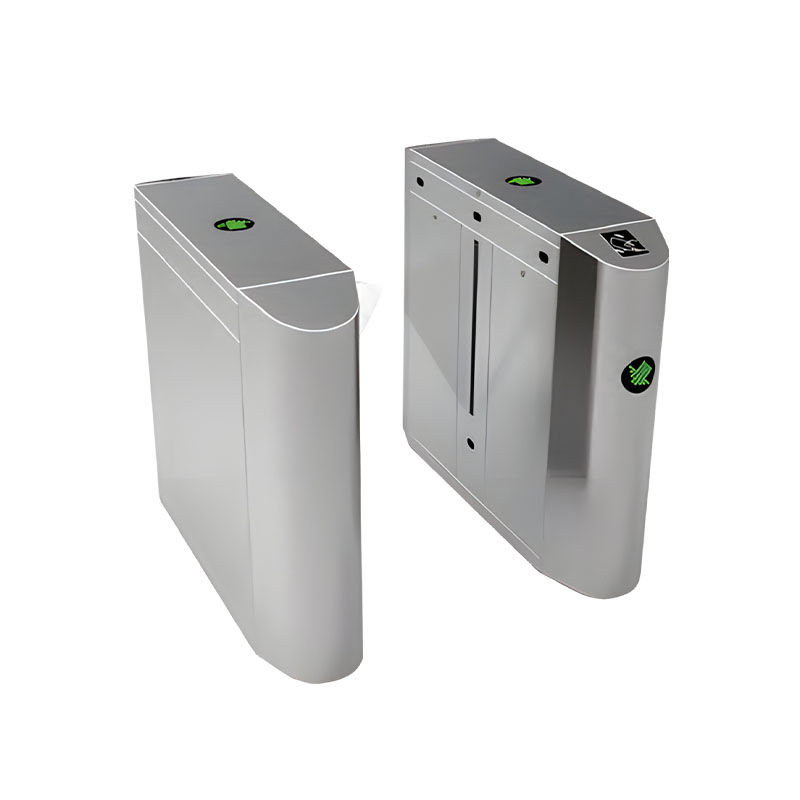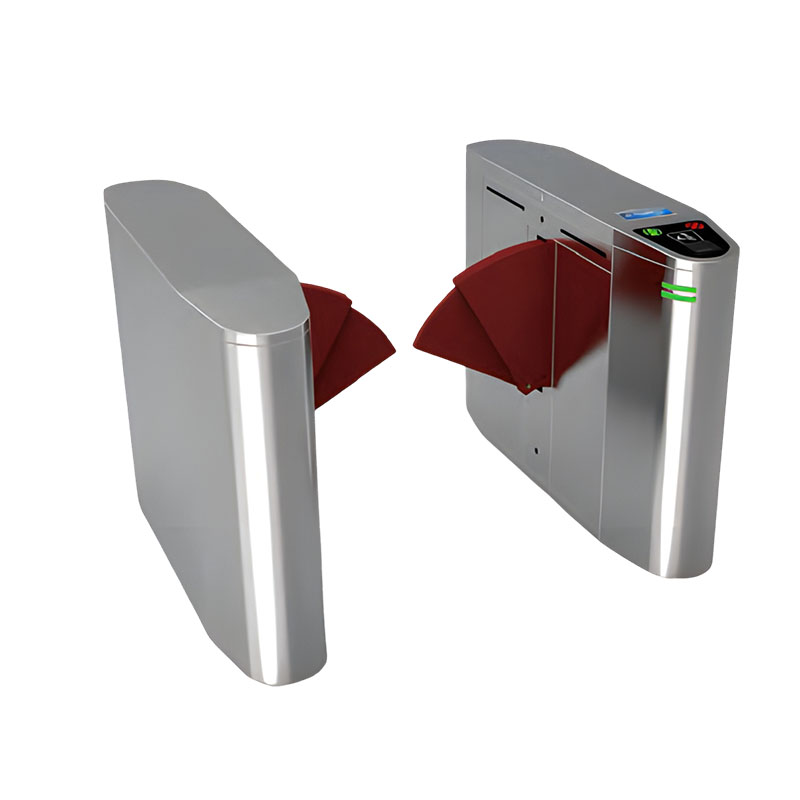Easy access to pedestrian access gates empowers smart scenarios
Release Time : 2025-04-28
With the continuous deepening and popularization of the concept of smart cities, smart technology is gradually penetrating into every corner of our lives. Among many smart facilities, pedestrian access gates, as an important node connecting different areas, not only improve the efficiency of traffic, but also provide strong support for urban management.
1. Intelligent management: improve traffic efficiency
Traditional pedestrian access gates often rely on manual operation or simple mechanical control, which is not only inefficient, but also easy to cause congestion, especially in crowded places such as subway stations and shopping mall entrances. Modern pedestrian access gates integrate a variety of smart technologies, such as face recognition, QR code scanning, NFC (near field communication), etc., making the passage process more convenient and efficient.
Face recognition technology: By installing high-precision cameras and advanced algorithm systems, pedestrian access gates can quickly and accurately identify users without swiping cards or showing documents, greatly improving the speed of passage.
QR code and NFC: For temporary visitors or unregistered users, verification can be completed by scanning the QR code on the phone or using an NFC-enabled device to ensure that everyone can enter and exit smoothly.
The application of these smart technologies not only simplifies the process and reduces the waiting time in line, but also enhances the security of the system to prevent unauthorized personnel from entering specific areas.
2. Data-driven decision-making: Optimizing resource allocation
In addition to improving traffic efficiency, pedestrian access gates can also collect a large amount of real-time data, which is crucial for optimizing resource allocation. For example, by analyzing information such as crowd density and travel time, managers can better understand the distribution of crowds in various time periods, so as to reasonably arrange staff, adjust the number of open channels, and even predict demand changes during peak hours.
Data analysis: With the help of big data technology and cloud computing platforms, the system can deeply mine the collected data and provide valuable insight reports. For example, if it is found that the utilization rate of a certain channel is low during a certain period of time, it can be considered to close it or change it to one-way traffic to save operating costs.
Intelligent scheduling: Based on the results of real-time data analysis, the system can also automatically adjust relevant parameter settings, such as opening more backup channels, increasing security forces and other measures to ensure that the scene is in good order.
This data-driven approach not only helps to improve the management level, but also lays the foundation for creating a more humane and intelligent urban environment.
3. Safety guarantee: protecting public safety
In any public place, safety always comes first. The pedestrian access gate is equipped with a series of safety protection measures to provide citizens with a safe and reliable passage environment.
Anti-pinch design: Considering the potential safety hazards that may arise during actual use, many new access doors use soft materials to make door wings and are equipped with sensitive pressure sensors. Once a foreign object is detected to be clamped, it will immediately stop and open in the opposite direction to avoid injury.
Emergency evacuation mechanism: In the event of a fire or other emergency, the system can quickly switch to emergency mode, and all access doors will automatically unlock and push outward, making it convenient for people to quickly evacuate the scene.
In addition, combined with the video surveillance system, the pedestrian access gate can also achieve all-weather and all-round security monitoring, detect abnormal behavior in time and issue an alarm to notify relevant personnel to deal with it, effectively preventing potential risks.
4. Green energy saving: promoting sustainable development
With the increase of global environmental awareness, energy conservation and emission reduction have become the common goal pursued by all walks of life. The pedestrian access gate is no exception. The design fully considers the energy consumption problem and adopts a series of energy-saving and environmental protection measures.
Low-power components: Select high-efficiency motors and control systems to ensure that the energy consumption of the equipment is minimized during operation; at the same time, use renewable energy power supply solutions such as solar panels to further reduce carbon emissions.
Intelligent sleep mode: When no people pass through for a long time, the system will automatically enter a low-power state, and resume normal operation when it senses someone approaching, which not only saves power resources but also extends the service life of the equipment.
Through these measures, the pedestrian access gate not only realizes its own green operation, but also makes positive contributions to the construction of a low-carbon and environmentally friendly society.
As an important part of smart city infrastructure, the pedestrian access gate is changing our daily lifestyle with its excellent functionality and wide applicability. Whether it is improving traffic efficiency, optimizing resource allocation, ensuring public safety, or practicing green concepts, it is playing an irreplaceable role.
1. Intelligent management: improve traffic efficiency
Traditional pedestrian access gates often rely on manual operation or simple mechanical control, which is not only inefficient, but also easy to cause congestion, especially in crowded places such as subway stations and shopping mall entrances. Modern pedestrian access gates integrate a variety of smart technologies, such as face recognition, QR code scanning, NFC (near field communication), etc., making the passage process more convenient and efficient.
Face recognition technology: By installing high-precision cameras and advanced algorithm systems, pedestrian access gates can quickly and accurately identify users without swiping cards or showing documents, greatly improving the speed of passage.
QR code and NFC: For temporary visitors or unregistered users, verification can be completed by scanning the QR code on the phone or using an NFC-enabled device to ensure that everyone can enter and exit smoothly.
The application of these smart technologies not only simplifies the process and reduces the waiting time in line, but also enhances the security of the system to prevent unauthorized personnel from entering specific areas.
2. Data-driven decision-making: Optimizing resource allocation
In addition to improving traffic efficiency, pedestrian access gates can also collect a large amount of real-time data, which is crucial for optimizing resource allocation. For example, by analyzing information such as crowd density and travel time, managers can better understand the distribution of crowds in various time periods, so as to reasonably arrange staff, adjust the number of open channels, and even predict demand changes during peak hours.
Data analysis: With the help of big data technology and cloud computing platforms, the system can deeply mine the collected data and provide valuable insight reports. For example, if it is found that the utilization rate of a certain channel is low during a certain period of time, it can be considered to close it or change it to one-way traffic to save operating costs.
Intelligent scheduling: Based on the results of real-time data analysis, the system can also automatically adjust relevant parameter settings, such as opening more backup channels, increasing security forces and other measures to ensure that the scene is in good order.
This data-driven approach not only helps to improve the management level, but also lays the foundation for creating a more humane and intelligent urban environment.
3. Safety guarantee: protecting public safety
In any public place, safety always comes first. The pedestrian access gate is equipped with a series of safety protection measures to provide citizens with a safe and reliable passage environment.
Anti-pinch design: Considering the potential safety hazards that may arise during actual use, many new access doors use soft materials to make door wings and are equipped with sensitive pressure sensors. Once a foreign object is detected to be clamped, it will immediately stop and open in the opposite direction to avoid injury.
Emergency evacuation mechanism: In the event of a fire or other emergency, the system can quickly switch to emergency mode, and all access doors will automatically unlock and push outward, making it convenient for people to quickly evacuate the scene.
In addition, combined with the video surveillance system, the pedestrian access gate can also achieve all-weather and all-round security monitoring, detect abnormal behavior in time and issue an alarm to notify relevant personnel to deal with it, effectively preventing potential risks.
4. Green energy saving: promoting sustainable development
With the increase of global environmental awareness, energy conservation and emission reduction have become the common goal pursued by all walks of life. The pedestrian access gate is no exception. The design fully considers the energy consumption problem and adopts a series of energy-saving and environmental protection measures.
Low-power components: Select high-efficiency motors and control systems to ensure that the energy consumption of the equipment is minimized during operation; at the same time, use renewable energy power supply solutions such as solar panels to further reduce carbon emissions.
Intelligent sleep mode: When no people pass through for a long time, the system will automatically enter a low-power state, and resume normal operation when it senses someone approaching, which not only saves power resources but also extends the service life of the equipment.
Through these measures, the pedestrian access gate not only realizes its own green operation, but also makes positive contributions to the construction of a low-carbon and environmentally friendly society.
As an important part of smart city infrastructure, the pedestrian access gate is changing our daily lifestyle with its excellent functionality and wide applicability. Whether it is improving traffic efficiency, optimizing resource allocation, ensuring public safety, or practicing green concepts, it is playing an irreplaceable role.







